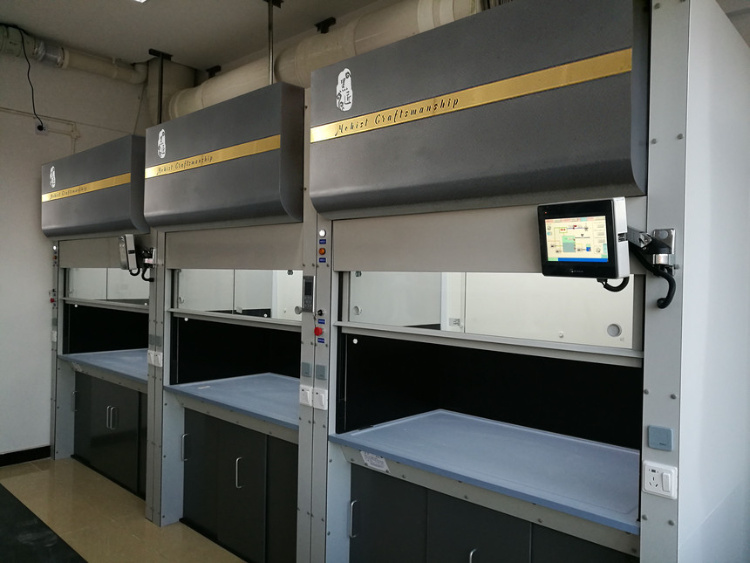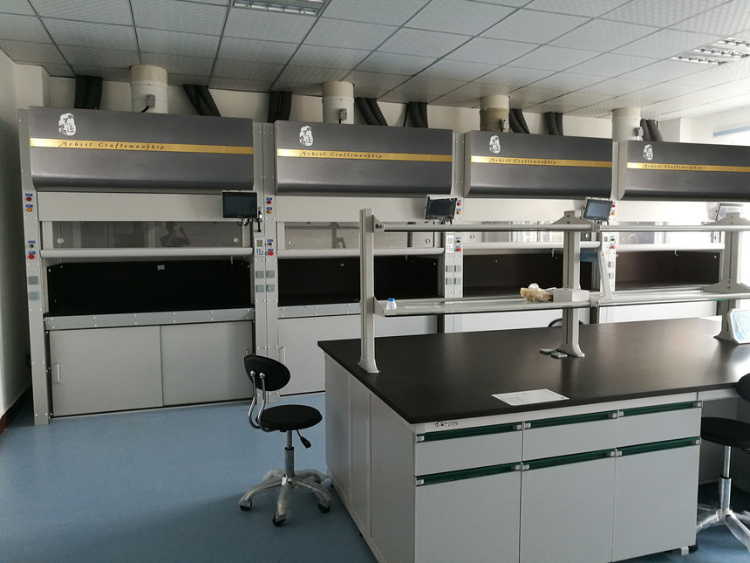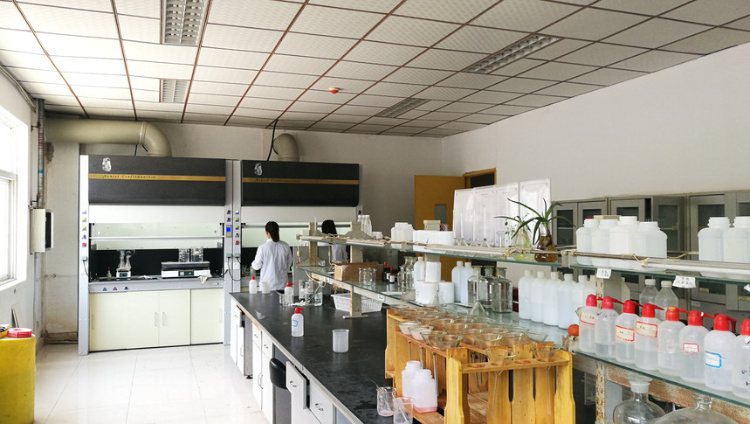Chengdu Ample Import And Export Co., Ltd. |
|
A fume hood, technically a laboratory chemical hood, is a type of local exhaust ventilation system (engineering control). A typical fume hood is cabinet with a moveable front
sash (window) made out of safety glass. Air is drawn into the hood
under and through the opened sash and is exhausted through openings
in the rear and top of the cabinet to a remote point such as
an exhaust stack on the roof of the building.
A properly used and properly functioning fume hood exhausts hazardous gases, dusts, mists, and vapors from a confined location and helps protect workers
from inhalation exposure.
A biological safety cabinet is similar to a fume hood in outward appearance but is
designed for work with pathogens (infectious microorganisms) or
materials contaminated with pathogens requiring a specific
biosafety level.
Biosafety cabinets (BSC's) are designed to protect the user, the
environment, and the material whereas fume hoods are designed to
protect the user and others in that workspace. For example,
a fume hood typically exhausts a toxic chemical to a roof stack where it is diluted to such
a low concentration that it is unlikely to harm someone. In contrast, it would be
a very bad idea to release a pathogen such as Ebola or
virus to the environment, even if diluted, so biosafety cabinets
are equipped with HEPA filters to remove the biological material.
Biological safety cabinets may not be safe for use with toxic
chemicals unless they exhaust the filtered air outside the lab/work
space. There has been at least one report of an explosion caused by the use of flammable chemicals in
a BSC.
| Model Specification | WJ-1500A | WJ-1500B | WJ-1800A | WJ-1800B |
| External dimensions of equipment(mm) | 1500(W)*1205 (D) *2400 (H) | 1800(W)*1205 (D) *2400 (H) | ||
| Dimension of works pace (mm) | 1260(W1)*780(D1) *1100 (H1) | 1560(W1)*780(D1) *1100 (H1) | ||
| Panel material | 20+6mm thick butterfly ceramics | |||
| Material of internal lining board | 5mm thick ceramic fiber board | |||
| Diversion structure | Lower air return | |||
| Control system | Button control panel (LCD panel) | |||
| PH value control | The medium is alkaline water solution; manual monitoring, and manual control through acid pump and alkali pump. | |||
| Input power | Three-phase five-wire 380V/50A | |||
| Current for air fan | Not over 2.8A(380V or 220V can be directly connected) | |||
| Maximum load of socket | 12 KW(total of 4 sockets) | |||
| Water tap | 1 set (remote control valve + water nozzle) | No | 1 set (remote control valve + water nozzle) | No |
| Water discharge way | Magnetic chemical pump strong discharge | |||
| Using environment | For non-explosion indoor use, within 0-40 degrees Celsius. | |||
| Applicable fields | Inorganic chemistry experiment; Food, medicine, electronics, environment, metallurgy, mining, etc. | |||
| Ways of Purification | Spray sodium hydroxide solution, no less than 8 cubic meters/hour | Spray sodium hydroxide solution.no less than 12 cubic meters/ hour | ||
| Ways of surface air speed control | Manual control (through the electric air valve to adjust the exhaust air volume or adjust the height of the moving door) | |||
| Average surface air speed | 0.6-0.8 m/s Exhaust air volume: 1420-1890m3/h (when door height h =500mm) | 0.6-0.8 m/s Exhaust air volume: 1760-2340m3/h (when door height h =500mm) | ||
| Speed deviation of surface air | Not higher than 10% | |||
| The average intensity of illumination | Not less than 700 Lux; Standard white and uv-free yellow LED lamps; The illumination is adjustable. | |||
| Noise | Within 55 decibels | |||
| Flow display | White smoke can pass through the exhaust outlet, no overflow. | |||
| Safety inspection | No spikes, edges; Charged body and the exposed metal resistance is greater than 2 mQ; Under 1500V voltage, no breakdown or flashover occurred for 1min test. | |||
| Resistance of exhaust cabinet | Less than 160 pa | |||
| Power consumption | Less than 1.0kw/h (excluding power consumption of fans and external instruments) | Less than 1.2kw/h (excluding power consumption of fans and external instruments) | ||
| Water consumption | Less than 3.2L/ h | Less than 4.0L/ h | ||
| Performance of wind compensation | With a unique wind compensation structure, the volume of the wind will not cause turbulence in exhaust cabinet and will not directly blow to the staff (need to connect to the air compensation system of the laboratory) | |||
| Air volume regulating valve | 315mm diameter flanged type anti-corrosion electric air flow regulating valve (electric contact actuator) | |||
1. All operations that may generate hazardous air contaminants must be done inside a laboratory fume hood.
2. Fume hoods do not prevent accidents or chemical splashes. 3. Hood users must be trained in the proper operation and use of laboratory fume hoods.
4. The hood should not be operated unless it is verified that it is working correctly.
5. Safety glasses (goggles), lab coats, and appropriate chemical gloves must be worn when working in, on, or around the fume hood.
6. Do not put your head in the hood, beyond the sash opening.
7. Do not use the hood for storage of equipment, containers, or chemicals which are not going to be used during the day.
8. Equipment and materials placed in the hood must not block hood slots, airfoils, or otherwise interfere with the smooth flow of air into the hood.
9. Never place or use equipment that protrudes beyond the face of the hood (sash opening). This configuration will disrupt air flow of air into the hood and reduce its efficiency.
10. Keep all equipment and materials at least 6 inches behind the plane of the sash (hood face), this will improve containment capture. A stripe (tape) on the hood working surface is a good reminder.
11. Place all bulky equipment away from the sidewalls to allow air flow around the equipment.
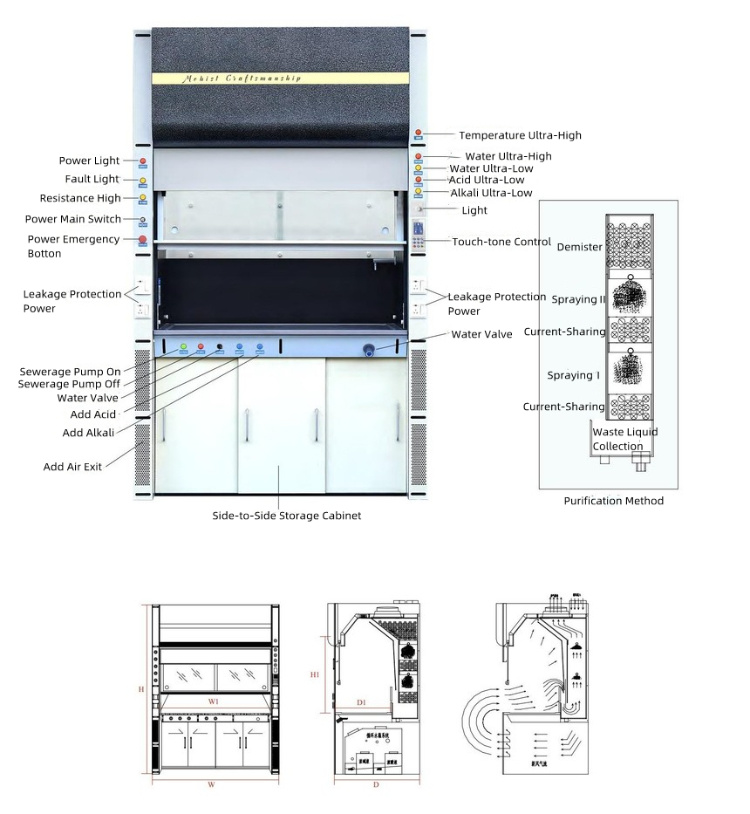
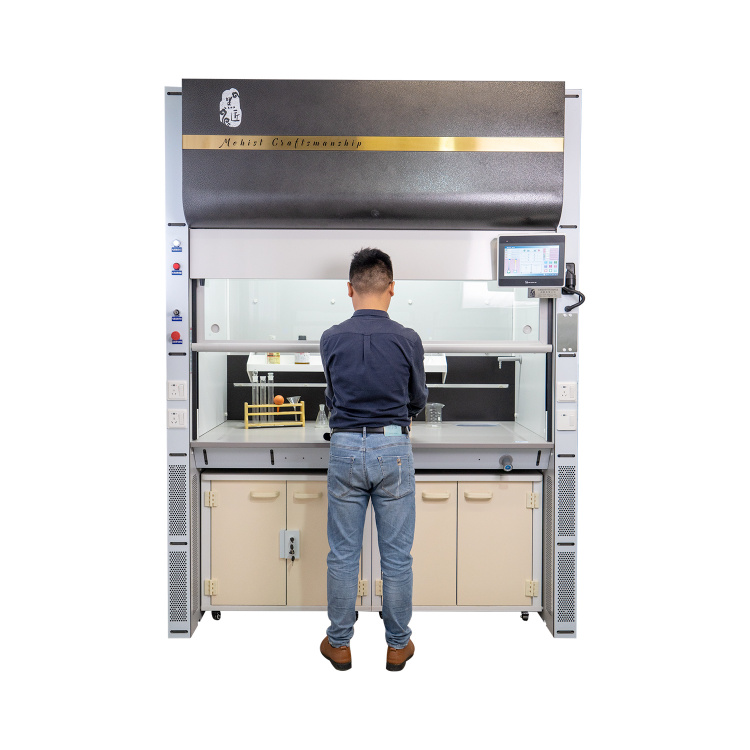
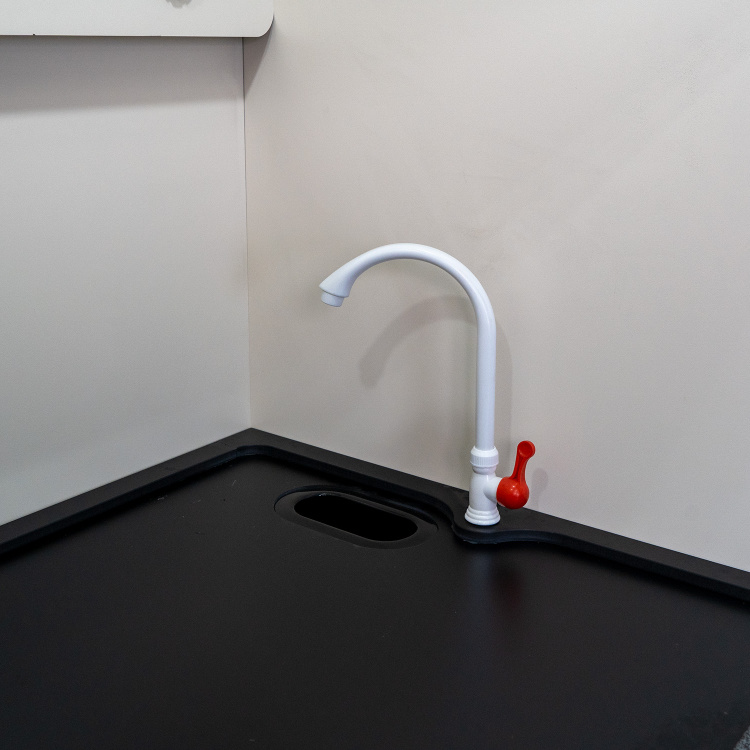
A fume hood is a ventilated enclosure in which gases, vapors and fumes are captured and removed from the work area. An exhaust fan situated on the top of the laboratory building pulls air and airborne contaminants through connected ductwork and exhausts them to the atmosphere.
Depending on its design, the sash may move vertically, horizontally or a combination of the two and provides some protection to the hood user by acting as a barrier between the worker and the experiment.
